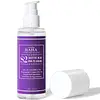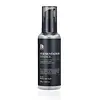What's inside
What's inside
 Key Ingredients
Key Ingredients

 Benefits
Benefits

 Concerns
Concerns

No concerns
 Ingredients Side-by-side
Ingredients Side-by-side

Galactomyces Ferment Filtrate
HumectantLactobacillus/Collagen Ferment Filtrate
HumectantWater
Skin ConditioningButylene Glycol
HumectantPentylene Glycol
Skin Conditioning1,2-Hexanediol
Skin ConditioningGlycerin
HumectantBifida Ferment Lysate
Skin ConditioningPanthenol
Skin ConditioningCeramide NP
Skin ConditioningSodium Hyaluronate
HumectantAloe Barbadensis Leaf Extract
EmollientAlthaea Rosea Root Extract
HumectantCopper Tripeptide-1
Skin ConditioningHexapeptide-11
Skin ConditioningHexapeptide-9
Skin ConditioningPalmitoyl Pentapeptide-4
Skin ConditioningPalmitoyl Tripeptide-1
Skin ConditioningTripeptide-1
Skin ConditioningIsopentyldiol
HumectantSucrose Palmitate
EmollientPropanediol
SolventXanthan Gum
EmulsifyingBetaine
HumectantSodium Surfactin
CleansingArginine
MaskingAcrylates/C10-30 Alkyl Acrylate Crosspolymer
Emulsion StabilisingAllantoin
Skin ConditioningAdenosine
Skin ConditioningPolyglyceryl-10 Laurate
Skin ConditioningCaprylyl Glycol
EmollientGalactomyces Ferment Filtrate, Lactobacillus/Collagen Ferment Filtrate, Water, Butylene Glycol, Pentylene Glycol, 1,2-Hexanediol, Glycerin, Bifida Ferment Lysate, Panthenol, Ceramide NP, Sodium Hyaluronate, Aloe Barbadensis Leaf Extract, Althaea Rosea Root Extract, Copper Tripeptide-1, Hexapeptide-11, Hexapeptide-9, Palmitoyl Pentapeptide-4, Palmitoyl Tripeptide-1, Tripeptide-1, Isopentyldiol, Sucrose Palmitate, Propanediol, Xanthan Gum, Betaine, Sodium Surfactin, Arginine, Acrylates/C10-30 Alkyl Acrylate Crosspolymer, Allantoin, Adenosine, Polyglyceryl-10 Laurate, Caprylyl Glycol
 Reviews
Reviews

Ingredients Explained
These ingredients are found in both products.
Ingredients higher up in an ingredient list are typically present in a larger amount.
1,2-Hexanediol is a synthetic liquid and another multi-functional powerhouse.
It is a:
- Humectant, drawing moisture into the skin
- Emollient, helping to soften skin
- Solvent, dispersing and stabilizing formulas
- Preservative booster, enhancing the antimicrobial activity of other preservatives
Aloe Barbadensis Leaf Extract is an extract of the leaves of the aloe, Aloe barbadensis, Liliaceae.
Aloe is one of the most well-known natural soothing ingredients, and for good reason. It’s full of water and has a cooling, calming effect on the skin, especially when it’s sunburned, itchy, or irritated. Aloe also helps your skin stay hydrated and smooth by mimicking what healthy skin naturally produces. On top of that, it contains vitamins and nutrients that support skin recovery.
It doesn’t protect you from the sun, but it can help your skin bounce back after too much time in it.
Let’s get into the details:
Aloe contains antioxidant Vitamins A, C, and E, which help fight off free radicals (unstable molecules from things like pollution that can damage your skin).
It’s also rich in polysaccharides, which are natural sugars that help hydrate the skin by acting like the skin’s own moisturizing agents. These, along with other sugars like monosaccharides, help form a protective barrier that locks in moisture.
Aloe works as both a humectant and an emollient. That means it draws water into the skin (humectant) and helps trap it there (emollient), making it an effective natural moisturizer.
You’ll also find a mix of other skin-supporting ingredients in aloe, including folic acid, choline, calcium, amino acids, fatty acids, and even Vitamin B12.
Out of the 420+ species of aloe, Aloe barbadensis is the most widely used in skincare products thanks to its gentle yet effective properties.
There are over 420 species of aloe but Aloe Barbadensis is the most commonly used for topical products.
Learn more about Aloe Barbadensis Leaf ExtractPropanediol is an all-star ingredient. It softens, hydrates, and smooths the skin.
It’s often used to:
Propanediol is not likely to cause sensitivity and considered safe to use. It is derived from corn or petroleum with a clear color and no scent.
Learn more about Propanediol